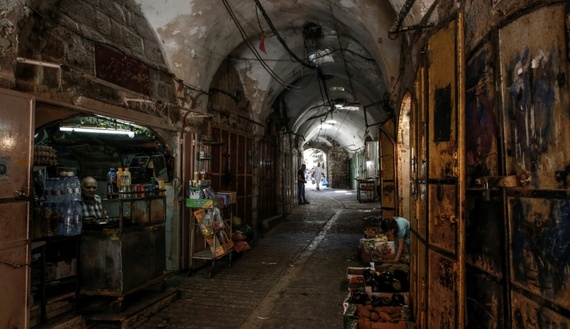Earlier this month, UNESCO has chosen the Palestinian city of Hebron (Al-Khalil) in Israel-occupied West Bank as a world heritage site.
The selection by UNESCO’s World Heritage Committee of the Old City of Hebron was supported by representatives of 12 countries during a secret ballot held in Poland on Friday, July 7, 2017. Three countries rejected the move, while six abstained.
The committee also identified the city as part of Palestine, in the first such move by the UN’s world heritage body.
Hebron is home to more than 200,000 Palestinians, and a few thousands of Israeli settlers. The city is home to the Ibrahimi mosque, which is known to Jews as the tomb of Patriarchs.
Palestinians celebrated the committee’s decision. Palestinian Tourism Minister Rula Maayah hailed the UNESCO decision as “historic”.
This is a “historical development because it stressed that Hebron and its mosque historically belong to the Palestinian people,” she said.
Israel occupied the West Bank from Jordan during the 1967 Middle East war.

The West Bank city of Hebron is home to the tombs of several prophets as Abraham, Isaac and Jacob and is one of the most important religious sites to Muslims and Jews alike.
Hebron is one of the oldest cities in the world, dating back to more than 3,000 years B.C.
It is home to the tombs of several prophets as Abraham, Isaac and Jacob and is one of the most important religious sites to Muslims and Jews alike.
Hebron’s Old City has also been put on UNESCO’s list of world heritage sites in danger. The resolution was fast-tracked on the basis that the site was under threat, with the Palestinians accusing Israel of an “alarming” number of violations, including vandalism and damage to properties.
Hebron / Al Khalil Old town, Palestine
The use of a local limestone shaped the construction of the old town of Hebron / Al-Khalil during the Mamluk period between 1250 and 1517. The centre of interest of the town was the site of Al mosque -Ibrahim / the tomb of the Patriarchs whose buildings are in a compound built in the 1st century CE to protect the tombs of the patriarch Abraham / Ibrahim and his family.
This place became a site of pilgrimage for the three monotheistic religions: Judaism, Christianity and Islam. The town was sited at the crossroads of trade routes for caravans travelling between southern Palestine, Sinai, Eastern Jordan, and the north of the Arabian Peninsula.
Although the subsequent Ottoman Period (1517-1917) heralded an extension of the town to the surrounding areas and brought numerous architectural additions, particularly the raising of the roof level of houses to provide more upper stories, the overall Mamluk morphology of the town is seen to have persisted with its hierarchy of areas, quarters based on ethnic, religious or professional groupings, and houses with groups of rooms organized according to a tree-shaped system.
Historic Locations
The most famous historic site in Hebron is the Cave of the Patriarchs. The Herodian era structure is said to enclose the tombs of the biblical Patriarchs and Matriarchs. The Isaac Hall now serves as the Ibrahimi mosque, while the Abraham and Jacob Hall serve as a synagogue. The tombs of other biblical figures (Abner ben Ner, Otniel ben Kenaz, Ruth and Jesse) are also located in the city.
The Oak of Sibta (Oak of Abraham) is an ancient tree which, in non-Jewish tradition, is said to mark the place where Abraham pitched his tent. The Russian Orthodox Church owns the site and the nearby Abraham’s Oak Holy Trinity Monastery, consecrated in 1925.
Hebron is one of the few cities to have preserved its Mamluk architecture. Many structures were built during the period, especially Sufi zawiyas. Mosques from the era include the Sheikh Ali al-Bakka and Al-Jawali mosque. The early Ottoman Abraham Avinu Synagogue in the city’s historic Jewish quarter was built in 1540 and restored in 1738.
References:
http://www.bbc.com/news/world-
https://en.wikipedia.org/wiki/
